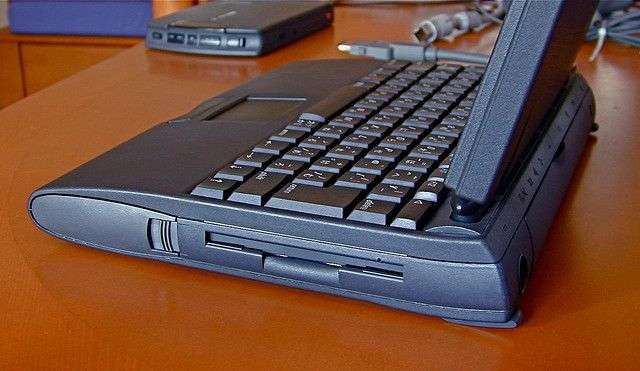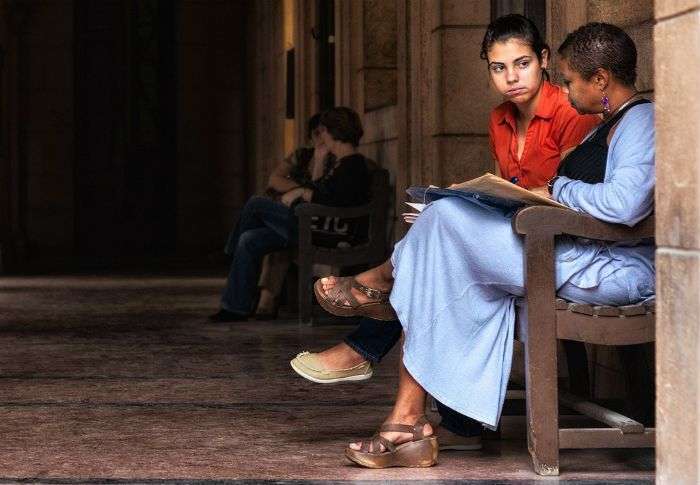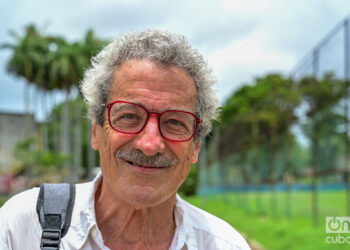As a student from Georgetown University spending the semester studying abroad in Havana, Cuba, I can’t help but notice the stark differences between the two university experiences that I’ve had.
The distinct societies and customs of the countries that Georgetown University and the University of Havana are grounded in have uniquely shaped each university’s individual culture despite their shared purpose: to educate those that will shape the future.
Here are ten of the most prominent differences that I have found between my experience at a university in the United States and my experience at the University of Havana.
Privacy/Confidentiality
In the United States, it is expected and assumed that each student’s grades will remain private for only the professor and the student themselves to be privy to unless the student takes it upon themselves to share their grade with a friend or classmate. Here in Cuba, that policy doesn’t exist. Grades, much like the majority of the country’s resources, are shared among the community. In University of Havana courses, grades are simply read aloud in front of the entire class or compiled on a list that is posted in a way for everyone to see.
Biases
In my experience, there is little administrative enforcement of academic objectivity at the University of Havana and it is not perceived as problematic if the professors actively express or even teach through the lens of their personal biases. While it would be unreasonable to claim that no professor at any university in the U.S. expresses their personal bias to their students in the way they teach, objectivity in the classroom is generally practiced and expected by both the administration and the students.
Laptops
If you walk into any given lecture at a university in the United States in the modern day and age, a large majority of the students will be typing away on their laptops, which are, for the most part, MacBooks. However, in Havana, few students have laptops, fewer use them in class, and fewer still are those who own one with the easily-recognizable glowing apple indicative of a MacBook.

Classes and classmates
Upon beginning university, Cuban students elect a path of study, or a carrera, similar to the concept of a major in the Unites States. The difference is that, in the U.S., we choose the classes that we want to take to fulfill our major requirements and, in Cuba, the entire program of study for each carrera is pre-set, meaning that there is just about no opportunity for the student to ever choose between a couple course options to find one that caters best to his or her interests, academic goals, etc. Consequently, each year’s group of students in each carrera take the same courses and, as a result, every class is taken with all the same people, for every semester, for each of the five years at the university. In the U.S., students get to elect the course and/or professor that they want to take and will generally end up having different groups of students in each class, although that can be dependent upon the specific school and program of study.
Fans
If you were to walk into any given course at the University of Havana during one of the hotter months of the year, you would see a majority of the Cuban students fanning themselves with accordion fans. Air conditioning is a luxury in Cuba and, as a result, students, both male and female, rely on handheld fans to keep themselves cool in the sweltering Caribbean heat whereas air conditioning is fairly ubiquitous in the U.S.
Class breaks
Each class period consists of two forty-five minute sessions separated by a five-minute break intended for the professors and students to use the restroom, find a snack, etc. A large majority, however, take advantage of this break as a time to smoke and the percentage of the university population that smokes cigarettes is much higher than at universities in the U.S. where there is a general trend away from cigarette smoking.
Opportunity
Despite the current student loan crisis, having a college degree in the United States is a huge factor in determining if someone will get a job, what kind of career he or she will enter into, his or her yearly salary, and the kinds of general economic opportunity he or she will have access to. However, a college degree in Cuba doesn’t open the same kinds of doors. There is no opportunity to leverage your degree for a higher paying job because the socialist structure of the Cuban economy doesn’t allow for much social mobility and most Cubans have no choice but to work for the state at a job that pays the standard, low monthly wage of about $30.
Dress code
The University of Havana adheres to a dress code that prohibits male and female students from wearing tanks tops, flip flops, and short shorts. Although there are some expectations regarding what clothing is appropriate for class in the United States, people are generally free to wear what they want. Many students show up to class in sweatpants, sweatshirts, and, on occasion, crazy costumes. That is a custom stereotypical of American university students that would be heavily frowned upon here and would likely result in a stern warning from a professor or administrator.

Diversity
American universities are both more and less diverse than their Cuban counterparts. When it comes to the geographic distribution of their students, American universities take the cake often boasting student populations from around the country and world. However, in Cuba, students are expected to attend university in their hometown/region and those that move to attend university, such as to Havana, often do so in order to pursue certain paths of study only offered at the principal universities. The limited numbers of students that do move to attend university away from home resultantly live in student dorms and receive a small stipend on which to live as they no longer have access to their families’ immediate support.
On the other hand, when it comes to race and socioeconomic levels, Cuban universities seem to have greater diversity. This is because the limitations that come from the high costs of education, the cost of university itself and also the costs of applying, such as expensive standardized tests, private SAT prep, college application fees, etc. in the United States don’t exist in Cuba due to the Revolution’s commitment to free, universal education.
Textbooks
In any given semester, a student attending an American university will spend hundreds of dollars on the various textbooks that they need for that semester’s classes. At the University of Havana, however, they have simplified the system due to the existing economic limitations facing most Cuban students. Instead of insisting that each student buy one of more expensive textbooks, the professors scan their elected readings onto a computer whereupon they transfer them to a memoria, or a flashdrive, which is then distributed throughout the class until each student has all of the readings for the semester in his or her own possession without having paid a cent.













Wow, very interesting article Nikki. Well done.
I really enjoyed reading this Nikki! It is very well written and insightful.
I like your article and hope you are doing well. : )
Naif comparison. Nicole! Comparing The Greatest Nation in the World, with this ’embargoed’ by the same country you’re trying to compare/match! Nikki, you better do first your homework with even a text book such as Cuba for Beginners and learn something about the USACuba relations dating back XVI century. God Save America, and Americans.